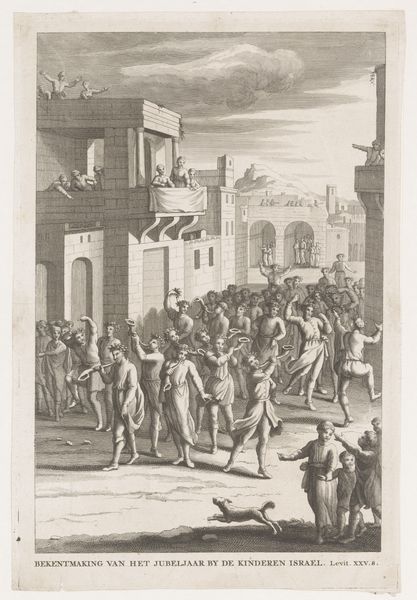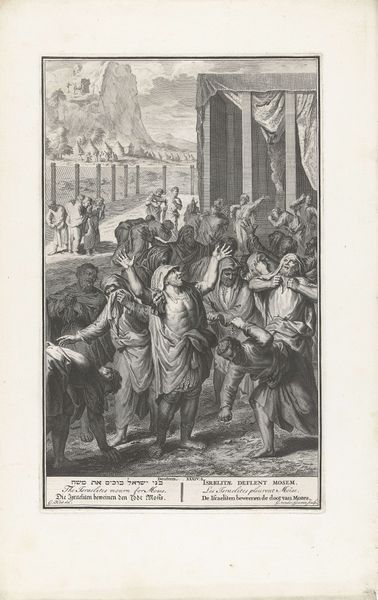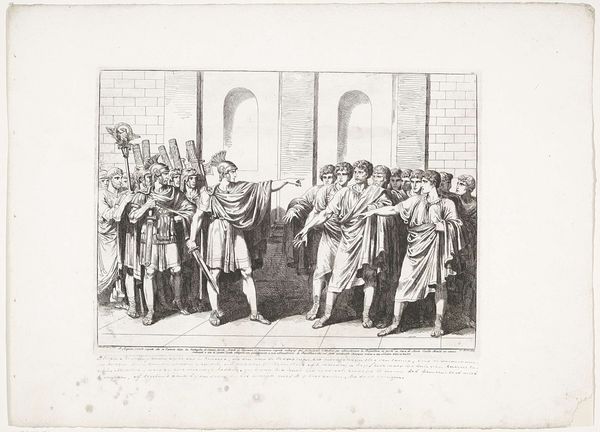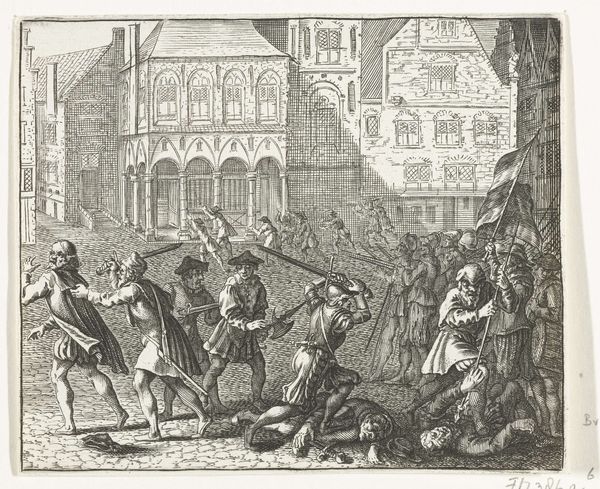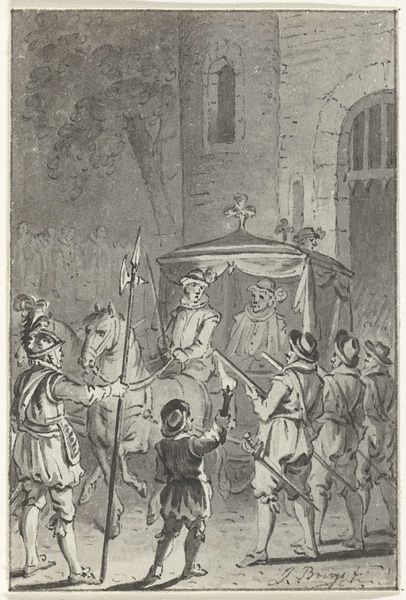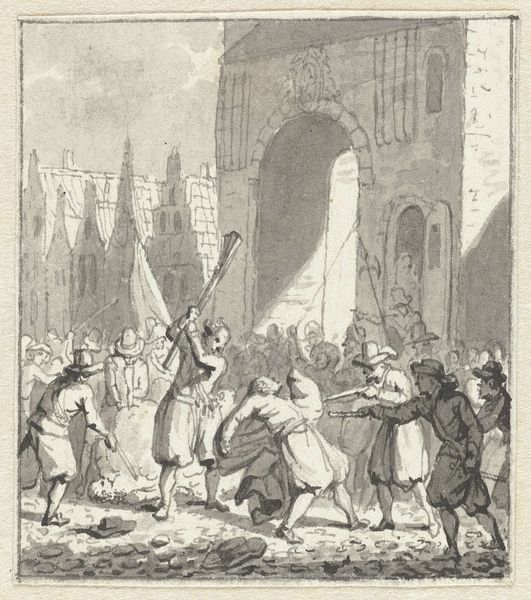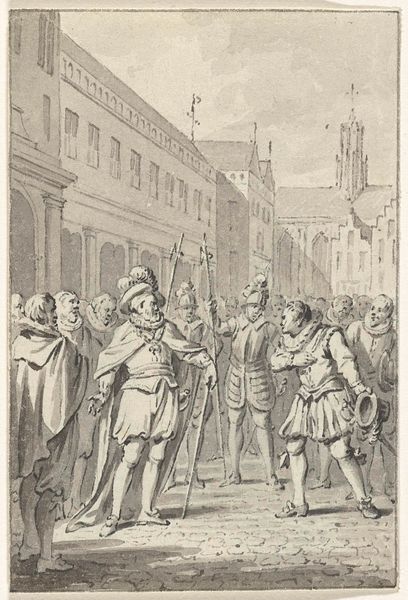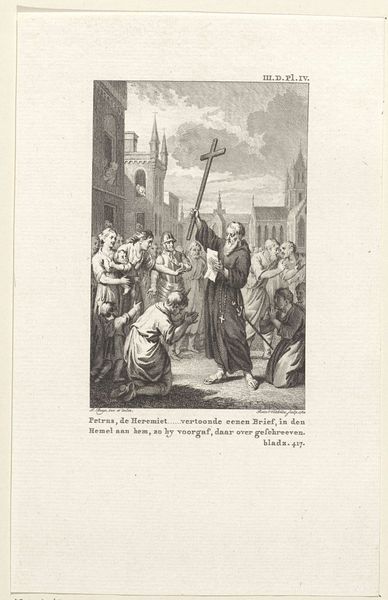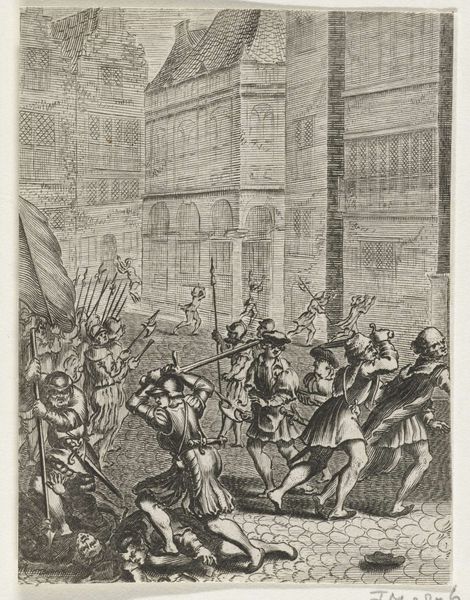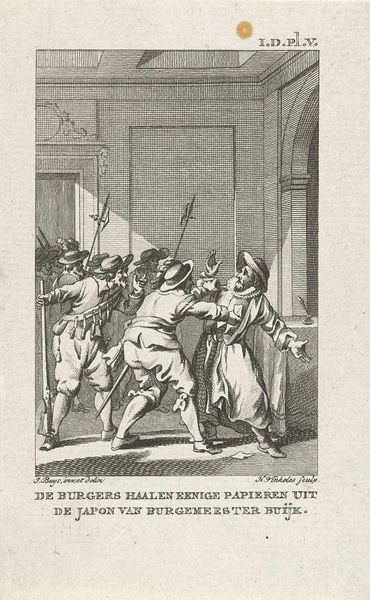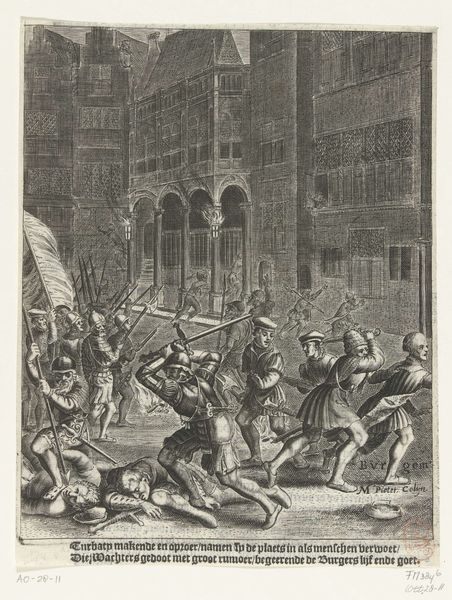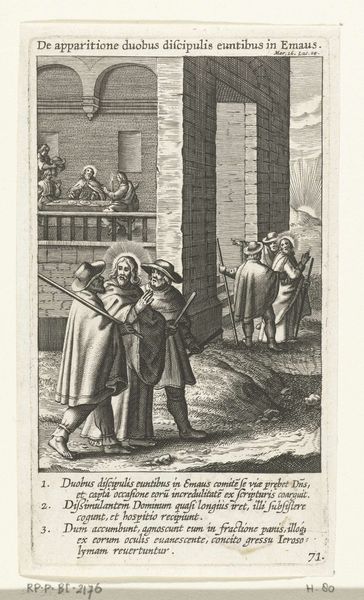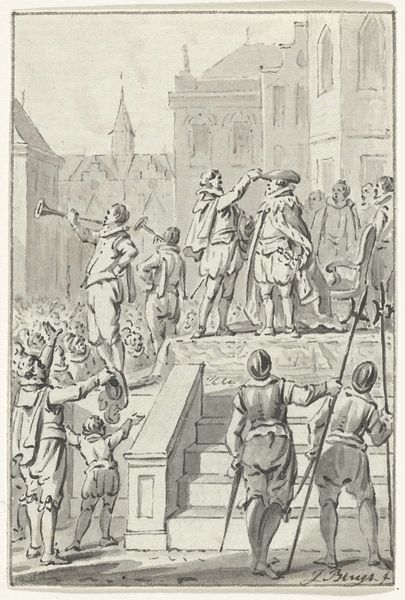
print, engraving
#
medieval
#
narrative-art
# print
#
old engraving style
#
figuration
#
pen-ink sketch
#
line
#
sketchbook drawing
#
history-painting
#
engraving
Dimensions: height 162 mm, width 142 mm
Copyright: Rijks Museum: Open Domain
Curator: What strikes me first is the sense of grimness, the stoic faces despite what should be a welcoming celebration. The light, even in this print, is harsh, almost unforgiving. Editor: Indeed. This 19th-century print by Lud. Falk depicts "Willem van Gulik te Brugge ontvangen in mei 1302," a scene of William of Jülich's entry into Bruges. Let’s delve into the materiality of such historical depictions. Consider the context in which this print was produced: prints became powerful tools for disseminating nationalist narratives in 19th-century Europe. The engraving as a reproducible medium made these narratives accessible. Curator: Precisely. The very act of choosing this historical moment speaks volumes. It's not just history; it's carefully constructed narrative rendered in ink. Notice how the artist uses line and shadow to create a strong directional force leading into the city gate. Editor: Absolutely. Falk has used an old engraving style to make it seems like a pen-ink sketch or a sketchbook drawing. But what were the conditions of its creation? Who was producing engravings in the 19th century? To what social stratum did they belong? The print market democratized images but also subjected artists to its demands. This piece would need to be considered against those pressures, those audiences. The quality of paper and ink tells their own story too – this was mass production but not necessarily a completely standardized experience for every recipient. Curator: You're right; that’s the crux. And on a purely visual level, note the skillful depiction of textures – the rough stone of the walls against the smooth armor. And beyond that the deliberate composition that reinforces the power structures in play; this is about who's controlling the story. Editor: This is a historical reimagining made digestible through accessible printing methods. One that was designed for an industrial age rather than the Medieval reality of the subject matter! What kind of workshops produced artworks like this in 19th century? Curator: Understanding how it’s made really deepens the impact; it helps decode the piece for sure! I had initially noted only its formal severity. Editor: Ultimately, examining this artwork invites contemplation about how images, through their materials and production, reinforce particular historical interpretations.
Comments
No comments
Be the first to comment and join the conversation on the ultimate creative platform.
